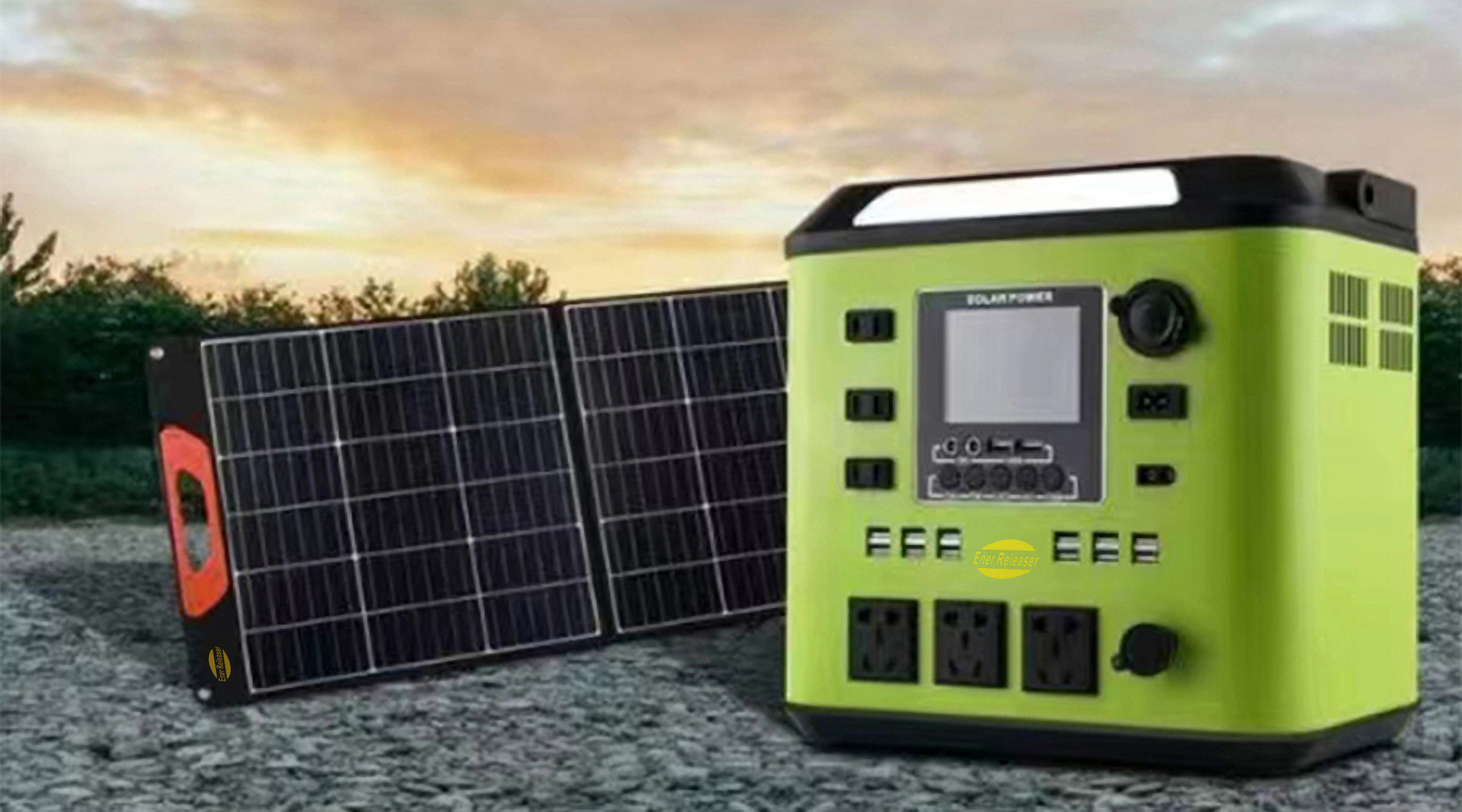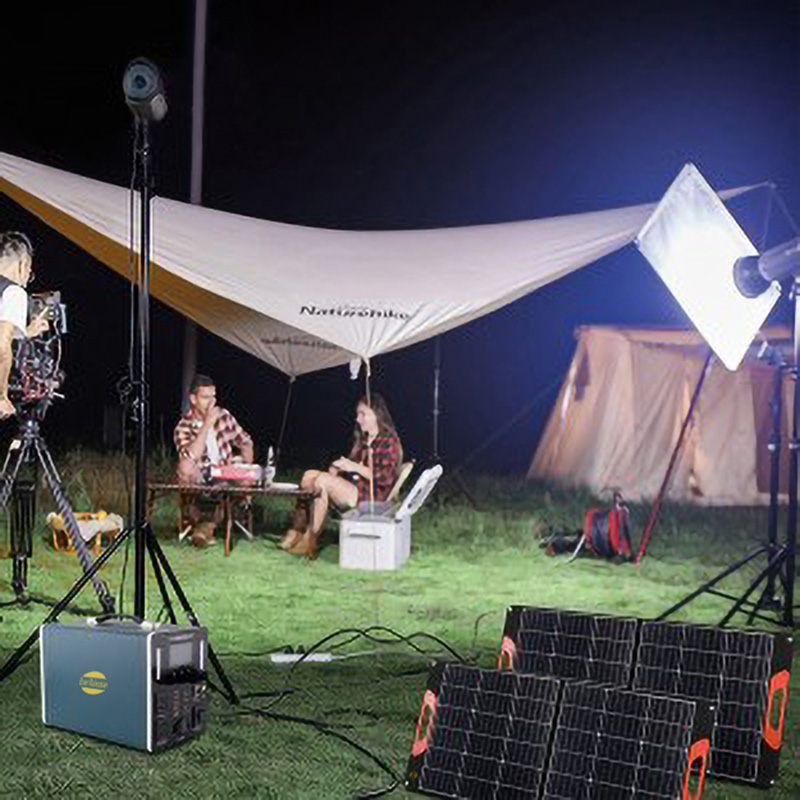November 18, 2022 | By Mike Misselwitz
With the Sherpa 100AC and 100PD, Goal Zero dramatically improves its design. These power stations boast faster charging and enhanced versatility. solar-panel

As a travel-happy remote worker who relies on power banks for daily operations, I’ve been frustrated. Typically, it’s a technology full of shortcomings. Of the dozen I’ve tried, many don’t work to begin with. Others shut off during critical charges, and still others lose power capacity over time and become paperweights.
The fourth-generation Goal Zero Sherpa 100AC and 100PD are an anomaly among portable chargers. They’re the most capable, powerful, and fast-charging power banks I’ve encountered to date.
In short: With the Sherpa 100s, Goal Zero improved its popular design with faster charge times, more powerful ports, and an included 2-year warranty to offset its $200-300 price points. After testing both new models over several weeks, I’ve found my new daily driver for power banks.
Both have specific qualities that work well for different uses. So, depending on what you’re using them for, you might prefer one over the other — but they’re both killer. Here’s what I appreciated most about the upgrade.
The Sherpa 100s are as powerful as travel chargers can be. Their Li-ion batteries pack 95 watt-hours (25,600 mAh) of capacity, which is the most capacity a battery can legally have and still be allowed on airplanes.
In testing, “95 watt-hours” translated to roughly eight full iPhone charges. Or two full laptop charges. Or more than 15 full charges for my GoPro Hero 11.
Compared to other power banks I’ve tested — the best being the BioLite 80PD, which tops out at 20,000mAh — the Sherpa 100s are drastically more capable with a single charge.
And unlike some other power banks on the market, they also hold up in the cold. As part of the test, I put the 100PD in my freezer for 2 hours, and it didn’t lose a single percentage point of charge.
The fourth-generation Sherpa 100 is available in two forms: the Sherpa 100AC and the Sherpa 100PD.
The Sherpa 100AC is around 2 inches wider than the 100PD, making room for a built-in AC inverter. That is essentially the same as a household power outlet. It charges at 100W and surges up to 150W, which is a formidable amount of power. But it’s not enough to power every 110 device.
The formula for power goes amps = watts/volts. And plugging in figures for the Sherpa 100AC, 100 watts/110 volts = 0.9 amps. It was enough to power my hair clippers (and shave my whole head), but not enough to power my air fryer or skill saw, unsurprisingly.
The DC version — the Sherpa 100PD — is capable of charging up to 100W, but it’s not capable of powering AC devices. Still, if you’re just using it for remote computer work like I am, the 100PD is plenty accommodating. It has no problem charging a laptop, assuming the laptop uses a USB-C cable, as MacBooks do.
Goal Zero claims the fourth-gen Sherpa 100s power devices 60% faster than previous models, a claim supported by its upgraded USB-C ports. Those output up to 100W, whereas the earlier versions max out at 60W.
Using the 100W USB-C port with Apple power cords, I was able to charge my iPhone 13 Pro at an 11W output from 0% to 100% in just over an hour.
Compared to the next most powerful power bank I’ve tested, the BioLite 80PD, the Sherpa 100 has more charging capacity but is also less reliable at a lower charge. Where I noticed that inconsistency most was in charging my laptop.
With the Sherpa 100AC fully charged to 100%, on one occasion I used the 100W USB-C port to charge my laptop from 10% to 100% in 90 minutes. That drew 45% from the Sherpa’s battery (leaving it at 55%).
On another occasion, I plugged my laptop into the 100W USB-C port when the Sherpa 100AC only showed a 35% charge. In less than 10 minutes, the Sherpa was dead and the laptop had only charged 5%.
I’m not sure what the cause of the inconsistency was, but the takeaway was that when the Sherpa’s LCD displays a lower charge, say 10-50%, the charge it actually holds is less reliable. It may be shorter on charge than it’s showing.
While the USB-C output has increased on the new Sherpa 100, the input of the same port is still 60 W, as it was in the previous model. To utilize the full capacity of the 60W input charging of the Sherpa 100, you need a power adapter with an equivalent capacity. Which is not your standard gas station power adapter.
With an Apple-issued iPhone power adapter, which maxes out at 18W, I had to let the Sherpa charge overnight to reach full charge. With Goal Zero’s 65W power adapter, however, I charged it from 2% to 100% in just over 2 hours.
Compared to other power banks I’ve tried, that’s exceptionally fast. But you have to buy Goal Zero’s 60W adapter ($40), which is not included with the Sherpa 100.
The main upgrades of the Sherpa 100AC and Sherpa 100PD take form in the faster charge times that come with the 100W output USB-C port. But there are a few other features worth mentioning.
One of the niftiest features of the Sherpa 100 is its ability to charge wirelessly. Place any smartphone on top of the Sherpa 100, press a button to activate the wireless charger, and the phone gets juice. The previous Sherpa also had a wireless charger, but its 5W capacity made it much less effective.
The new wireless charger operates at 15W. So, it’ll charge a phone about as fast as a standard power adapter plugged into a household socket.
The new color LCD screen presents all the info I need in a clean, easy-to-understand layout. Along with a percentage to indicate charge level, it also communicates the number of hours to empty, as well as input and output wattage. In most cases, I’d probably be fine not knowing all this, but more info is generally better than less.
Along with the AC inverter, the Sherpa 100AC is equipped with an 8mm solar panel input, which can be connected to a solar panel for charging. This is a cool feature for folks who use solar to power their road rig, or one of Goal Zero’s portable solar panel chargers. It enables the Sherpa 100AC to be powered up off-grid.
The Sherpa 100PD can also be powered by solar, but it requires Goal Zero’s proprietary Nomad 20 solar panel. That is sold separately and connects to the Goal Zero Sherpa 100PD via its two-way USB-C port.
I didn’t have the equipment to test the solar charging capacity of either device. But Goal Zero claims that the 100AC can be fully powered in as little as 3 hours with a 50W solar panel, while the 100PD takes 8 to 16 hours with the Nomad 20. Thus, if solar charging is a priority to you, opt for the Sherpa 100AC.
Unlike some of the other power banks on the market, like the Dark Energy Poseidon Pro, the Sherpa isn’t a product I feel comfortable tossing around or dropping. The unit is wrapped in an aluminum case with impact rails for added durability. While it does feel solid, it’s not bombproof or waterproof.
For me, the Sherpa is a good option for car camping or remote working. Because for those activities, I don’t need high levels of durability, weight and size is not an issue, and I prefer to have the most power capacity I can get. (It’s also suitable in those scenarios because I’m never far from a 110 socket, and can usually keep the Sherpa topped off.)
I treat these power banks with the same care I use with my laptop. If I were to take it backpacking, I’d want the carrying case to go with it.
I use my power bank to charge my phone, laptop, tablet, and POV cameras. All of this can be accomplished with the smaller Sherpa 100PD. I also carry the power bank in my backpack and lug it around almost everywhere I go. So, compactness and light weight are important to me.
All things considered, the Goal Zero Sherpa 100PD power bank is most suitable for my needs. And it’s my recommendation for other content creators and remote workers. It’s also $100 cheaper, conveniently.
For people who use a power bank as their main energy source on a camper rig or conversion van, the Goal Zero Sherpa 100AC power bank is probably a better fit, especially if solar panels are involved.
It’s nice to have the option of an AC outlet in certain scenarios when camping. And if you’re keeping the unit in your car rather than carrying it on your back, the added bulk of the 100AC won’t change much. Different strokes for different folks.
Make your choice based on your own power needs, but between the Goal Zero Sherpa 100AC and 100PD power banks, you can’t really go wrong.
Check 100AC Price at REI Check Sherpa 100 PD/AC Prices at REI
Visit the author’s YouTube page for an unboxing review of the Sherpa 100AC and Sherpa 100PD power banks, as well as other gear reviews.
Mike Misselwitz began his writing career as an editor for "Surfing" and "SUP" magazines while chasing stories, waves and powder around California in his van named Elmer. He then spent three years as a wilderness backpacking guide in Yosemite before moving to Seattle and buying a sailboat. He now works as a freelance writer while chasing stories, waves, powder and wind around the PNW. You can follow Mike’s exploits on his Youtube channel, Dirtbag Dopamine.
We tested the best winter boots for women in 2022, including winter hiking boots, snow boots, extra-warm boots, and winter rain boots.

Solar Powered Generator For Camping © Copyright 2022 GearJunkie, All Rights Reserved